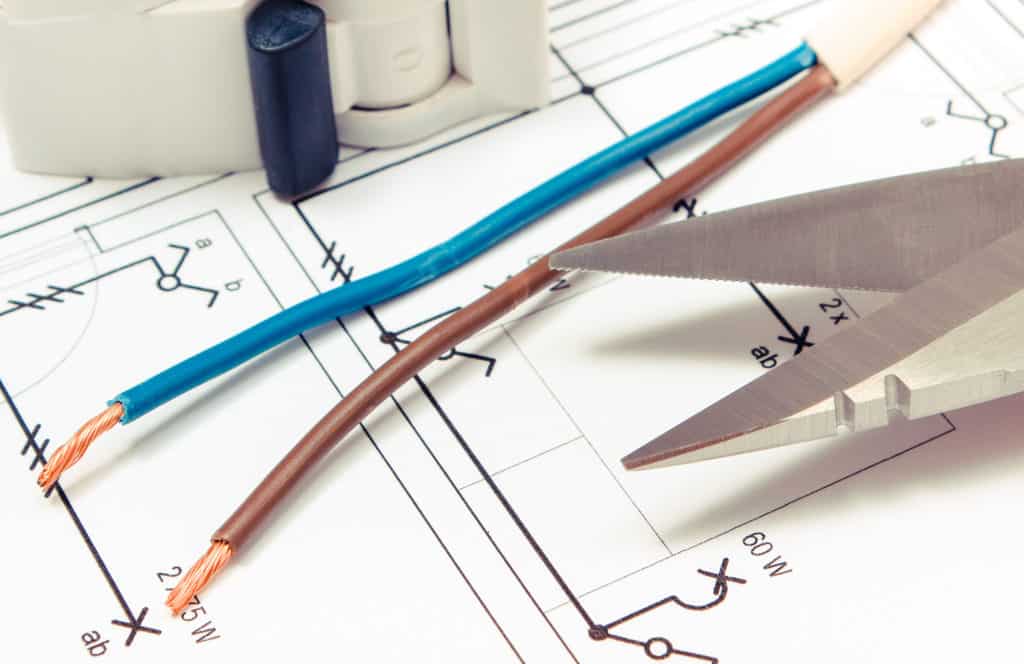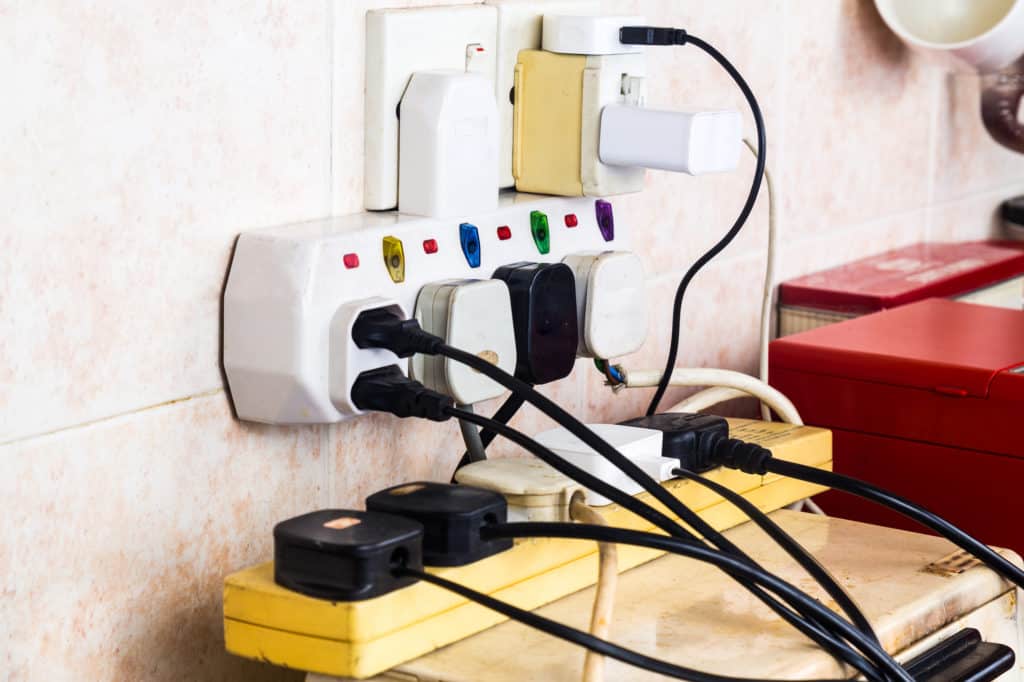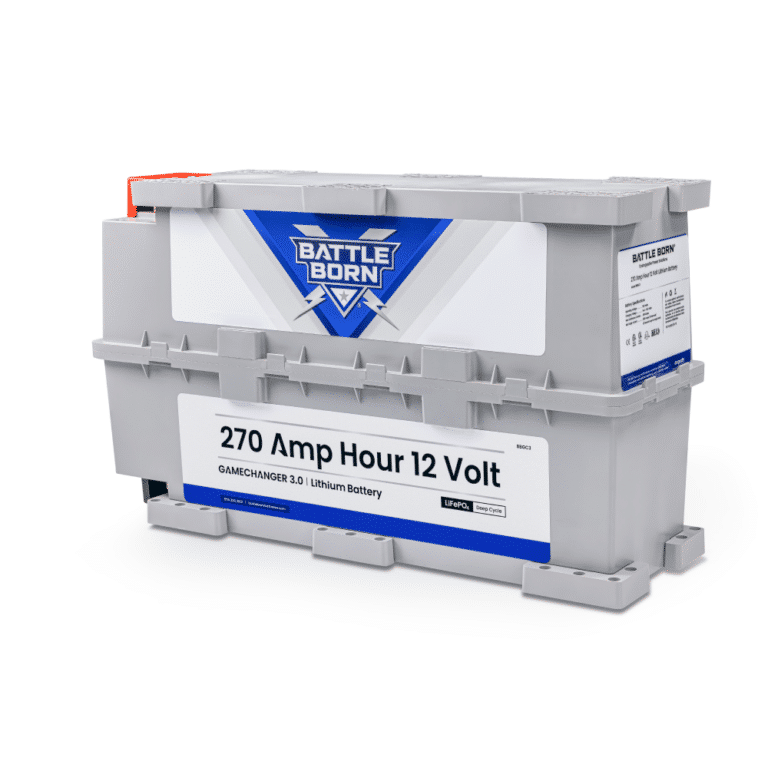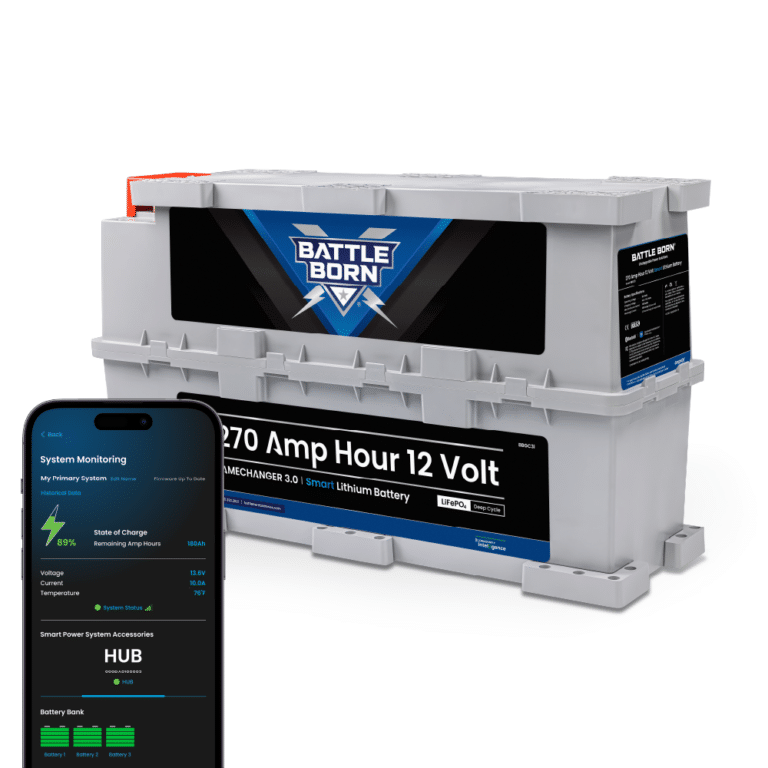
MENUMENU
TALK TO AN EXPERT
Special Hours: 7AM – 6PM PST
TALK TO AN EXPERT
Special Hours: 7AM – 6PM PST
Whether you’re designing a 120-volt electrical system for your house or a 12-volt system for your RV, it’s critical to understand what voltage drop is and how to calculate it. Correctly calculating the voltage drop in your system will help keep you safe and make sure all of your electronics are working properly. Let’s take a closer look!
Even though copper wires are fantastic conductors, they still have a small amount of resistance. Ohm’s Law states that voltage equals current multiplied by resistance (V = I*R). Therefore, a small amount of voltage is lost in the wires as current flows through your electrical system. This is known as voltage drop.
More current flowing or higher resistance wire will result in a higher voltage drop.

Calculating the exact voltage drop in an electrical system is very complicated. It depends on the resistance of the wire, which changes depending on the temperature, the length of the wire, and the type of current (AC or DC) flowing through the system and load type (inductive or resistive). However, getting a close estimate is pretty simple and is sufficient in almost all applications.
One of the easiest ways to calculate voltage drop is to use an online voltage drop calculator. These calculators let you enter the type of wire material, size of wire, type of current, length of wire, and the load current. After you enter all of your information, they tell you how much voltage you will lose.
However, if you like doing things the hard way or you don’t have a computer on hand, you can be your own voltage drop calculator and figure out a close approximation on your own. To do so, you will use Ohm’s Law.
Voltage = Current x Resistance
The current in the system will be dependent on what load (or loads) you have connected. You will need to add all of the load currents up to get the total system current in amps.
The resistance is the resistance of the wire. The resistance of a wire depends mainly on the diameter and length of the wire. Again, it also depends slightly on the temperature of the wire, but for most applications, it is not necessary to be that exact. Most American Wire Gauge (AWG) tables show resistance in Ohms per foot or Ohms per meter.
Once you know the current, the type of wire, and the length of wire, you can calculate your voltage drop. Let’s look at a quick example:
Assume we have a 24-volt battery system with a two amp load connected, and we are using a 14 gauge wire that is 50 feet long. From the AWG chart above, 14 gauge copper wire resistance is 2.5 Ohms per 1,000 feet or .0025 Ohms per foot. Therefore, 50 feet of 14 gauge wire has a resistance of .125 Ohms (50 x .0025 = .125). Now, multiply two amps by .125 ohms to get about .25 volts of voltage drop. This means that the voltage at the load will be about .25 volts lower than the voltage at the source.

When the voltage drops in your electrical system, you lose energy as heat in the wiring. The result is that your wires heat up and the voltage at your devices is lower than the voltage at the source. Neither of these are serious concerns if you can minimize the drop.
Most electronics can operate within a small range around their rated voltage. For example, a 24-volt inverter doesn’t necessarily need exactly 24 volts. However, an excessive voltage drop will cause your devices to stop working or malfunction and could even cause damage. An inverter will most likely shut down prematurely when under load if this occurs even if the batteries are not drained.
Since the voltage lost in the wires dissipates as heat, an excessive voltage drop is also a safety concern. If your wires get too hot, the insulation can melt and cause a fire. To ensure the safety of your system, it is critical to minimize your voltage drop to an acceptable level.
The acceptable voltage drop in a system is dependent on the devices in that system. Some electronics have a wide range of operating voltages and are very forgiving. Others are not. Refer to the operating manuals of your electronics to determine your specific voltage requirements.
The biggest concern is not that your devices may not work but rather the safety of your system and preventing a fire. Small amounts of voltage drop should not be a fire hazard. In fact, the National Electric Code (NEC) recommends that the voltage drop at your furthest device be less than 5% of the source. This an excellent guideline to work within and will help ensure the safety of your circuit and the proper functionality of your system.
If we refer back to how we calculate voltage drop, we can see a few ways to reduce it. The first is to reduce the load current in the system. This is likely not a good long-term solution, but it may be a quick fix if you’re not in a place to rewire your system. For example, if everything is working and you plug in a new device, and something stops working or starts malfunctioning, perhaps it’s a voltage drop issue. Unplugging something will reduce the drop.

If the scenario above happens frequently, it may be time to seek a more permanent solution. The other option for reducing voltage drop is to reduce the resistance of the wiring. There are two ways to do this, either reduce the length of the wire or use a thicker gauge wire. Most likely, reducing the length won’t be an option, so sizing up your wiring is likely the best option.
Picking the correct wire size is critical to combating the voltage drop in your system. Using resources like the voltage drop calculator and AWG wire charts will allow you to make smart decisions on which size wire to choose. We suggest sizing up your wiring one or two sizes if you aren’t exactly sure about your load or length. It is always best to have slightly oversized wiring than undersized.
A good voltage drop calculator will help you figure out what size you need to minimize your drop.

Voltage drop isn’t something you think about every day, but it’s important to understand if you’re designing an electrical system. Choosing the proper wire size and length for your application is essential to its optimal functionality and safety.
→ Suggested Reading: What Battery Cable Size Should I Use?
Make sure to do your research, and if you have any questions or concerns, please reach out to the experts here at Battle Born. We’re always happy to help!
We know that building or upgrading an electrical system can be overwhelming, so we’re here to help. Our Reno, Nevada-based sales and customer service team is standing by at (855) 292-2831 to take your questions!
Also, join us on Facebook, Instagram, and YouTube to learn more about how lithium battery systems can power your lifestyle, see how others have built their systems, and gain the confidence to get out there and stay out there.
Shop Best Sellers








Ask a technical specialist now at 855.292.2831
Stay in the Know